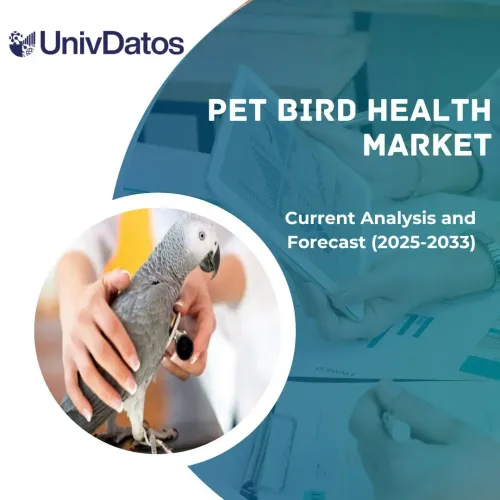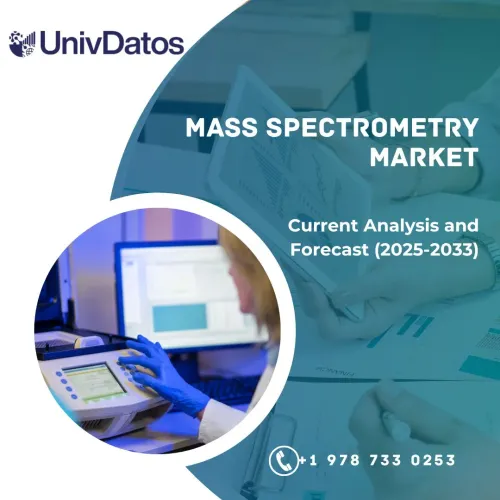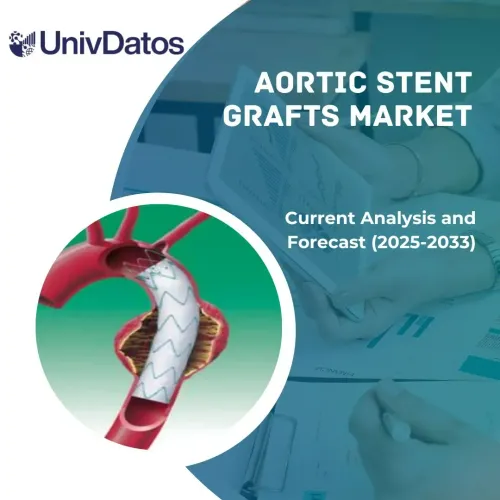- Home
- About Us
- Industry
- Services
- Reading
- Contact Us
Artificial Iris Market: Current Analysis and Forecast (2022-2028)
Emphasis on Material Type (Fiber and Fiber-free); Color (Blue, Brown, and Others); Application (Cosmetic and Therapeutic); Age Group (Pediatric and Adults); End-Users (Hospitals, Eye Surgery Centers, and Others); and Region/Country
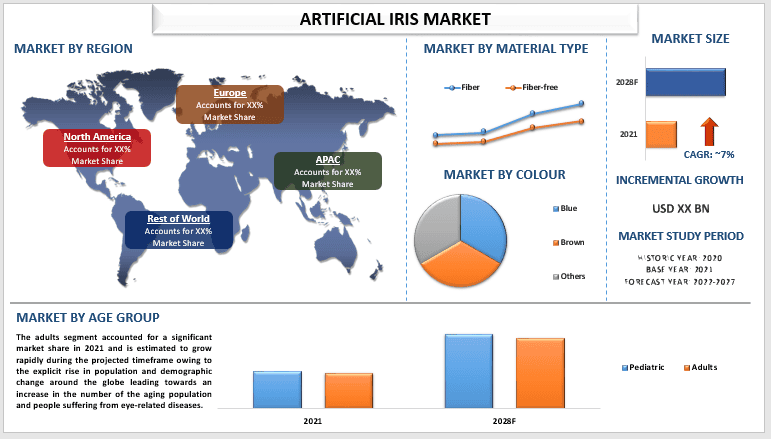
The artificial iris market is expected to register a CAGR of ~7% over the period of 2022-2028. An artificial iris is a prosthetic iris that is primarily utilized in the process of replacing the damaged iris in several eye defects as such congenital aniridia and traumatic iris loss and other eye complications. An artificial iris is implanted when a surgeon makes a small incision and implants it. This Iris is held in place by the anatomical structures of the eye or, if needed, by sutures, and mimics the function of the natural iris. It creates an artificial pupil that reduces the amount of light entering the eye. The surgically implanted prosthetic is made of thin, foldable silicone and is sized and colored for individual patients. The FDA approved the first artificial iris implant for patients with congenital aniridia (absence of an iris) or eye damage. It was shown to be safe and effective in a clinical trial of 389 adults and children with aniridia or other iris defects. The major drivers that will influence the adoption of artificial iris include a growing number of eye defects, escalating geriatric population with eye defects, and increasing demand for minimally invasive surgical procedures.
Morcher, Ophtec, HumanOptics, Reper NN, VEO Ophthalmics, Spectrum Surgical, EyeYon Medical, and Pixium Vision are some of the key players in the market. Several M&As along with partnerships have been undertaken by these players to facilitate customers with hi-tech and innovative products/technologies.
Insights Presented in the Report
“Amongst material type, the fiber artificial iris segment is expected to witness the highest CAGR growth during the analyzed period”
Based on the material type, the artificial iris market is bifurcated into fiber and fiber-free. The fiber segment is expected to witness the highest CAGR growth during the projected timeframe. Fiber model has a polyester meshwork layer embedded in it to provide adequate tear strength to withstand suturing and the fiber-embedded device is more robust to tighter sutures and is less likely to induce cheese wiring or tearing under higher suture tensions. Therefore, these advantages were the major factor responsible for the growth of the segment.
Artificial Iris Market Report Coverage
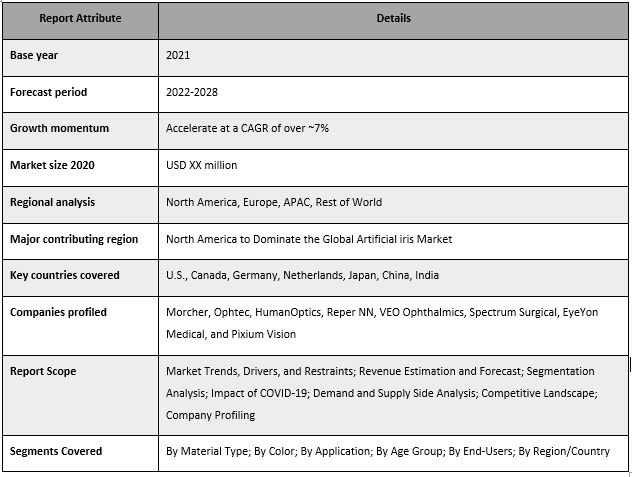
“Amongst application, the cosmetics is expected to witness considerable CAGR during the forecast period”
Based on the application, the market is fragmented into cosmetics and therapeutics. The cosmetics segment grabbed a considerable CAGR during the forecast period. Artificial iris implants were originally developed for therapeutic purposes but have recently been used for cosmetic alteration of eye color. The artificial iris improves the cosmetic appearance of the eye in patients with aniridia.
“Amongst end-users, the eye surgery centers category is expected to witness considerable CAGR during the forecast period”
Based on the end-users, the market is fragmented into hospitals, eye surgery centers, and others. The eye surgery centers segment grabbed a considerable CAGR during the forecast period. The eye center chain is growing all over the world owing to the escalation in population size and rise in the older population. This is favoring the global artificial iris market. Moreover, the presence of hi-tech facilities in centers is further driving patients towards corrective and cosmetic procedures which is further increasing the adoption of the artificial iris.
“Asia-Pacific is expected to witness the highest CAGR during the analyzed period”
For a better understanding of the market dynamics of the artificial iris market, a detailed analysis was conducted for different regions across the globe including North America (U.S., Canada, and the Rest of North America), Europe (Germany, Netherlands, and the Rest of Europe), Asia-Pacific (Japan, China, India and Rest of Asia-Pacific), and the Rest of World has been conducted. Asia-Pacific is expected to witness the highest CAGR during the analyzed period. The number of geriatric people in the Asia Pacific is expected to grow due to the presence of two of the most populous countries namely India and China. For say, China is expected to foresee a surge in the geriatric population due to the One-Child Policy. Further, Japan is the country with the highest life expectancy and the highest population of geriatrics. As a result of both increased longevity and decreased fertility rates, rapid aging in Asia and the Pacific has put the region at the forefront of one of the most important global demographic trends.
Reasons to buy this report:
- The study includes market sizing and forecasting analysis validated by authenticated key industry experts.
- The report presents a quick review of overall industry performance at one glance.
- The report covers an in-depth analysis of prominent industry peers with a primary focus on key business financials, product portfolio, expansion strategies, and recent developments.
- Detailed examination of drivers, restraints, key trends, and opportunities prevailing in the industry.
- The study comprehensively covers the market across different segments.
- Deep dive regional level analysis of the industry.
Customization Options:
Global artificial iris market can further be customized as per the requirement or any other market segment. Besides this, UMI understands that you may have your own business needs, hence feel free to connect with us to get a report that completely suits your requirements.
Table of Content
Research Methodology for the Global Artificial Iris Market Analysis (2022-2028)
Analyzing the historical market, estimation of the current market, and forecasting the future market of the global artificial iris market were the three major steps undertaken to create and analyze the adoption of the artificial iris in major regions globally. Exhaustive secondary research was conducted to collect the historical market numbers and estimate the current market size. Secondly, to validate these insights, numerous findings and assumptions were taken into consideration. Moreover, exhaustive primary interviews were also conducted, with industry experts across the value chain of the global artificial iris market. Post assumption and validation of market numbers through primary interviews, we employed a top-down/bottom-up approach to forecasting the complete market size. Thereafter, market breakdown and data triangulation methods were adopted to estimate and analyze the market size of segments and sub-segments in the industry pertains to. Detailed methodology is explained below:
Analysis of Historical Market Size
Step 1: In-Depth Study of Secondary Sources:
Detail secondary study was conducted to obtain the historical market size of the artificial iris market through company internal sources such as annual reports & financial statements, performance presentations, press releases, etc., and external sources including journals, news & articles, government publications, competitor publications, sector reports, third-party database, and other credible publications.
Step 2: Market Segmentation:
After obtaining the historical market size of the artificial iris market, we conducted a detailed secondary analysis to gather historical market insights and share for different segments & sub-segments for major regions. The major segments included in the report as the material type, color, application, age group, and end-users. Further country-level analyses were conducted to evaluate the overall adoption of testing models in that region.
Step 3: Factor Analysis:
After acquiring the historical market size of different segments and sub-segments, we conducted a detailed factor analysis to estimate the current market size of the artificial iris market. Further, we conducted factor analysis using dependent and independent variables such as a rise in the geriatric population and the growing prevalence of aniridia cases globally. A thorough analysis was conducted for demand and supply-side scenarios considering top partnerships, mergers and acquisitions, business expansion, and product launches in the artificial iris market sector across the globe.
Current Market Size Estimate & Forecast
Current Market Sizing: Based on actionable insights from the above 3 steps, we arrived at the current market size, key players in the global artificial iris market, and market shares of the segments. All the required percentage shares split, and market breakdowns were determined using the above-mentioned secondary approach and were verified through primary interviews.
Estimation & Forecasting: For market estimation and forecast, weights were assigned to different factors including drivers & trends, restraints, and opportunities available for the stakeholders. After analyzing these factors, relevant forecasting techniques i.e., top-down/bottom-up approach was applied to arrive at the market forecast for 2028 for different segments and sub-segments across the major markets globally. The research methodology adopted to estimate the market size encompasses:
- The industry’s market size, in terms of revenue (USD) and the adoption rate of the artificial iris market across the major markets domestically
- All percentage shares, splits, and breakdowns of market segments and sub-segments
- Key players in the global artificial iris market in terms of solutions offered. Also, the growth strategies adopted by these players to compete in the fast-growing market
Market Size and Share Validation
Primary Research: In-depth interviews were conducted with the Key Opinion Leaders (KOLs) including Top Level Executives (CXO/VPs, Sales Head, Marketing Head, Operational Head, and Regional Head, Country Head, etc.) across major regions. Primary research findings were then summarized, and statistical analysis was performed to prove the stated hypothesis. Inputs from primary research were consolidated with secondary findings, hence turning information into actionable insights.
Split of Primary Participants in Different Regions
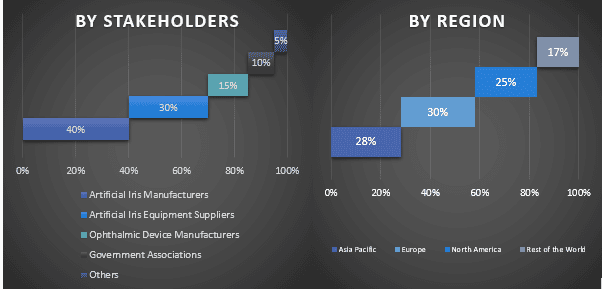
Market Engineering
Data triangulation technique was employed to complete the overall market estimation and to arrive at precise statistical numbers for each segment and sub-segment of the global artificial iris market. Data was split into several segments & sub-segments post studying various parameters and trends in the areas of material type, color, application, age group, and end-users in the global artificial iris market.
The Main Objective of the Global Artificial Iris Market Study
The current & future market trends of the global artificial iris market were pinpointed in the study. Investors can gain strategic insights to base their discretion for investments on the qualitative and quantitative analysis performed in the study. Current and future market trends determined the overall attractiveness of the market at a regional level, providing a platform for the industrial participant to exploit the untapped market to benefit from a first-mover advantage. Other quantitative goals of the studies include:
- Analyze the current and forecast market size of the artificial iris market in terms of Value (USD). Also, analyze the current and forecast market size of different segments and sub-segments
- Segments in the study include areas of material type, color, application, age group, and end-users.
- Define and analysis of the regulatory framework for the artificial iris market industry.
- Analyze the value chain involved with the presence of various intermediaries, along with analyzing customer and competitor behaviors of the industry.
- Analyze the current and forecast market size of the artificial iris market for the major region.
- Major countries of regions studied in the report include Asia Pacific, Europe, North America, and the Rest of the world.
- Company profiles of the artificial iris market and the growth strategies adopted by the market players to sustain in the fast-growing market.
- Deep dive regional level analysis of the industry
Related Reports
Customers who bought this item also bought


